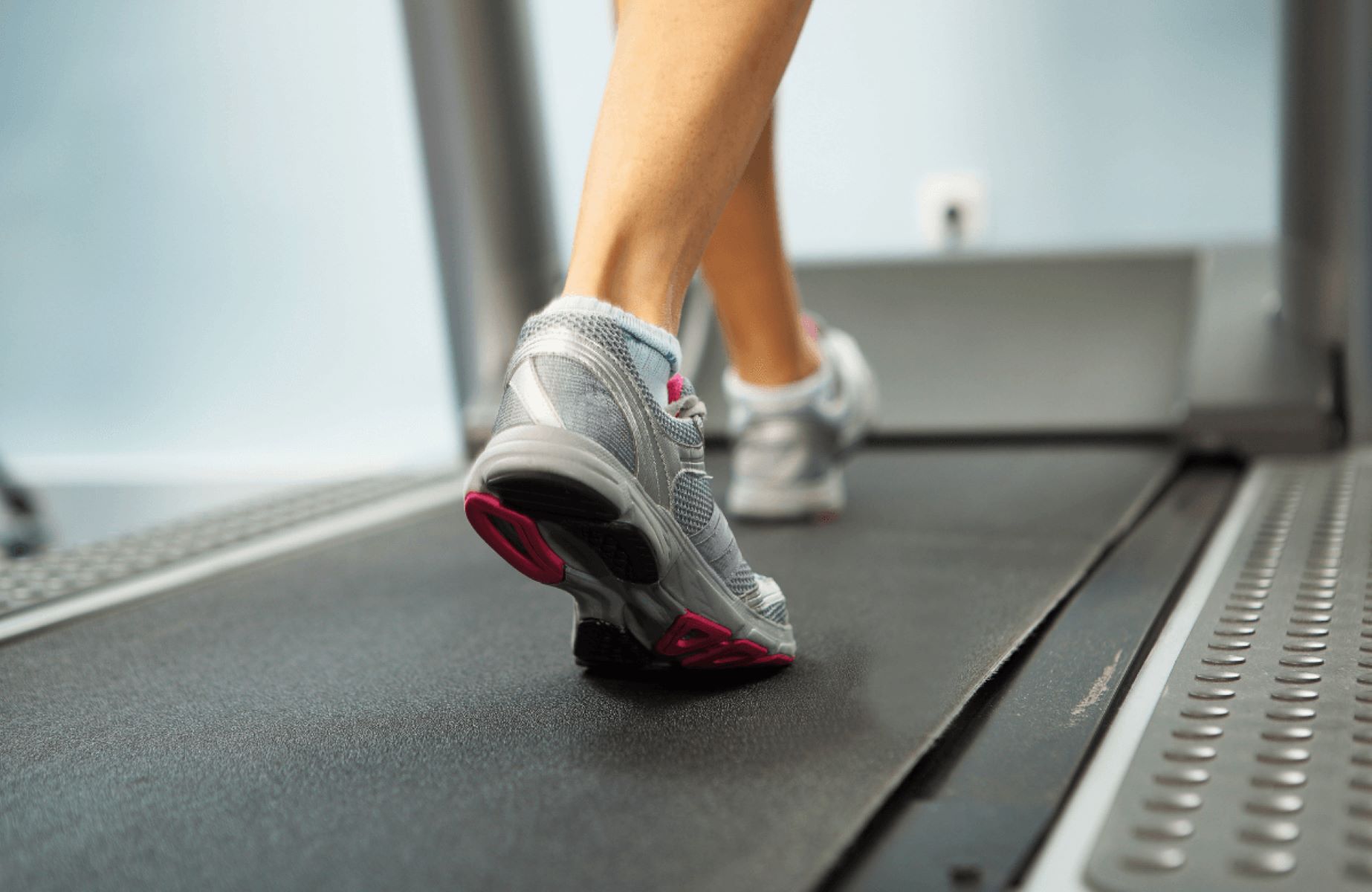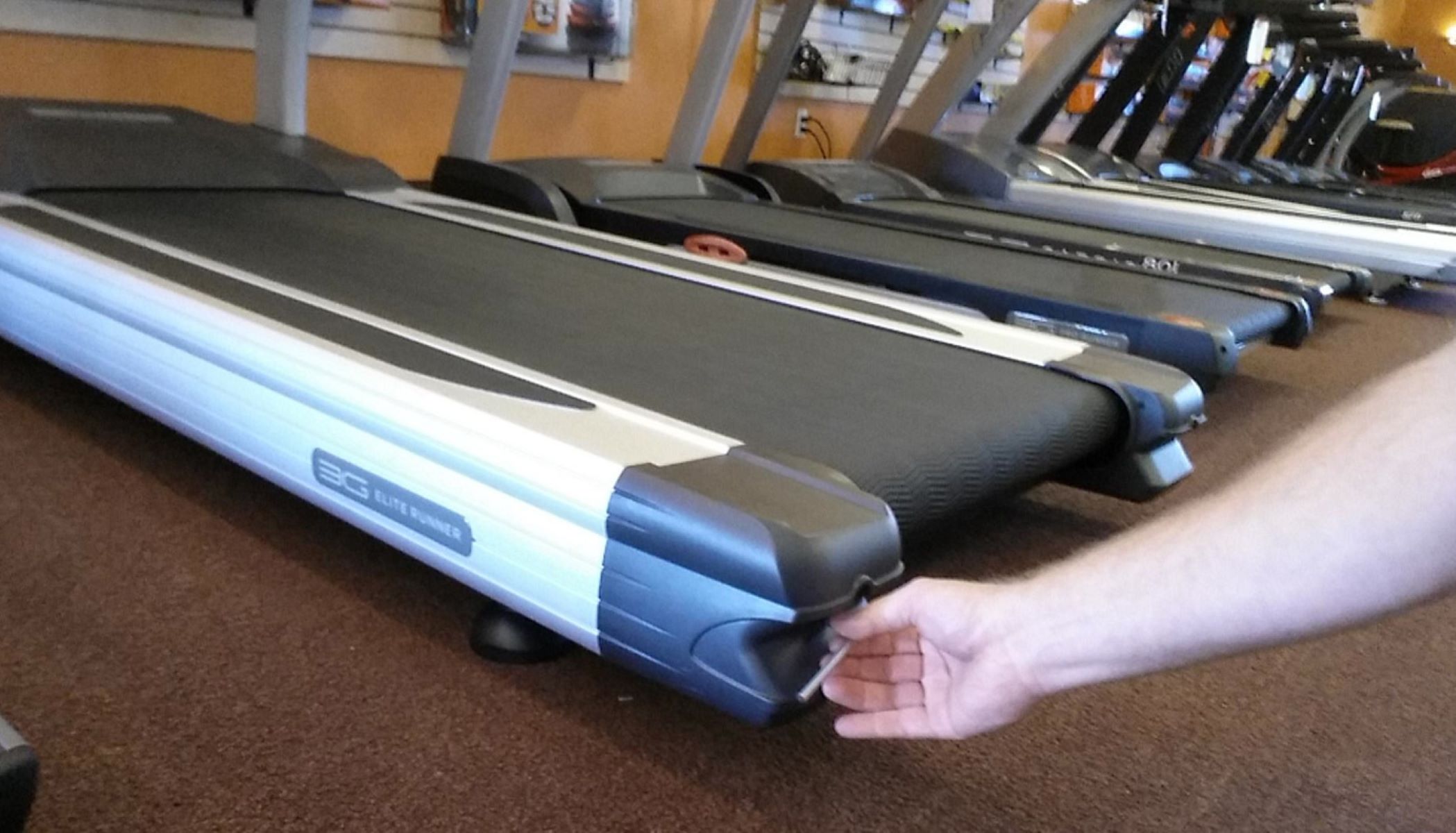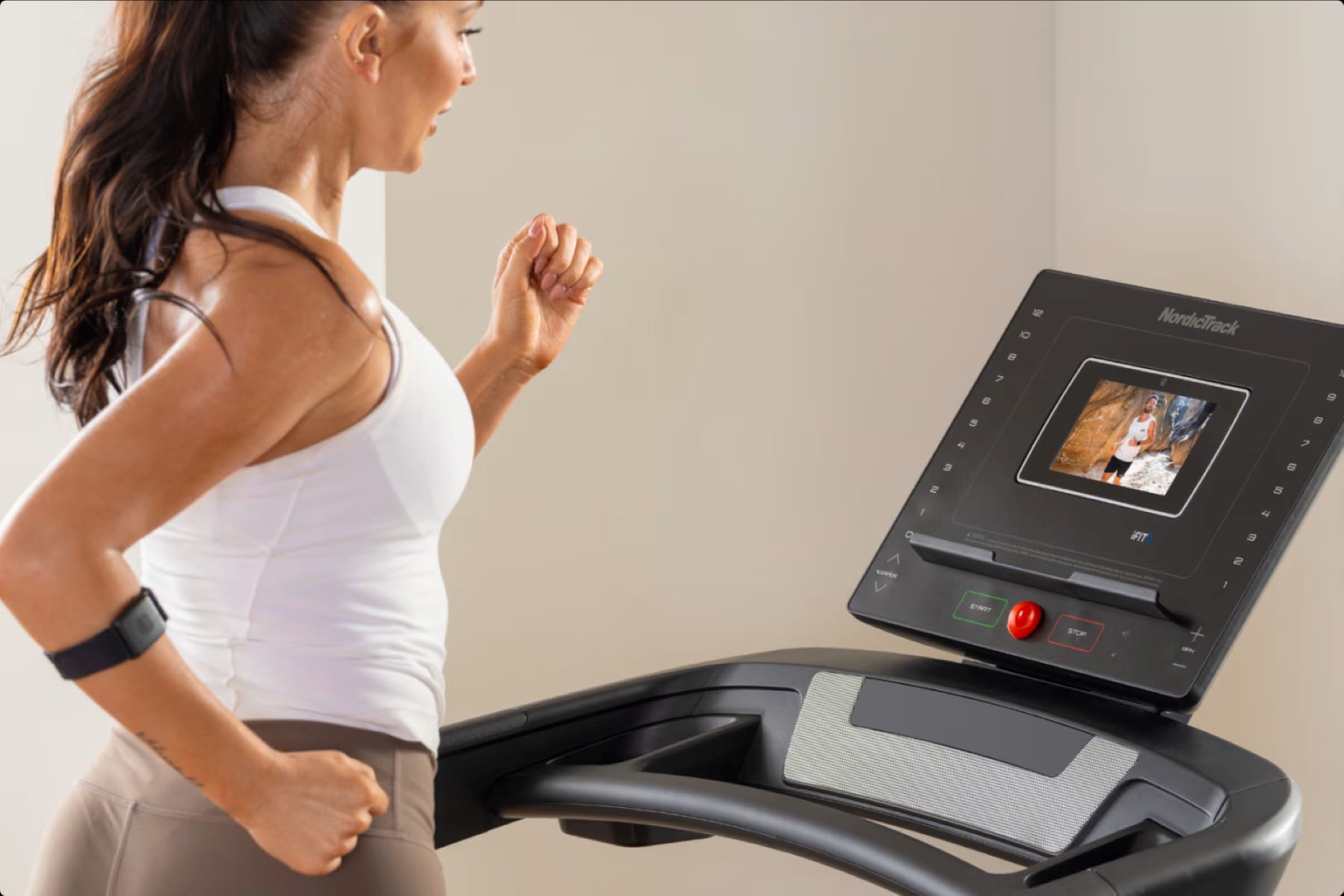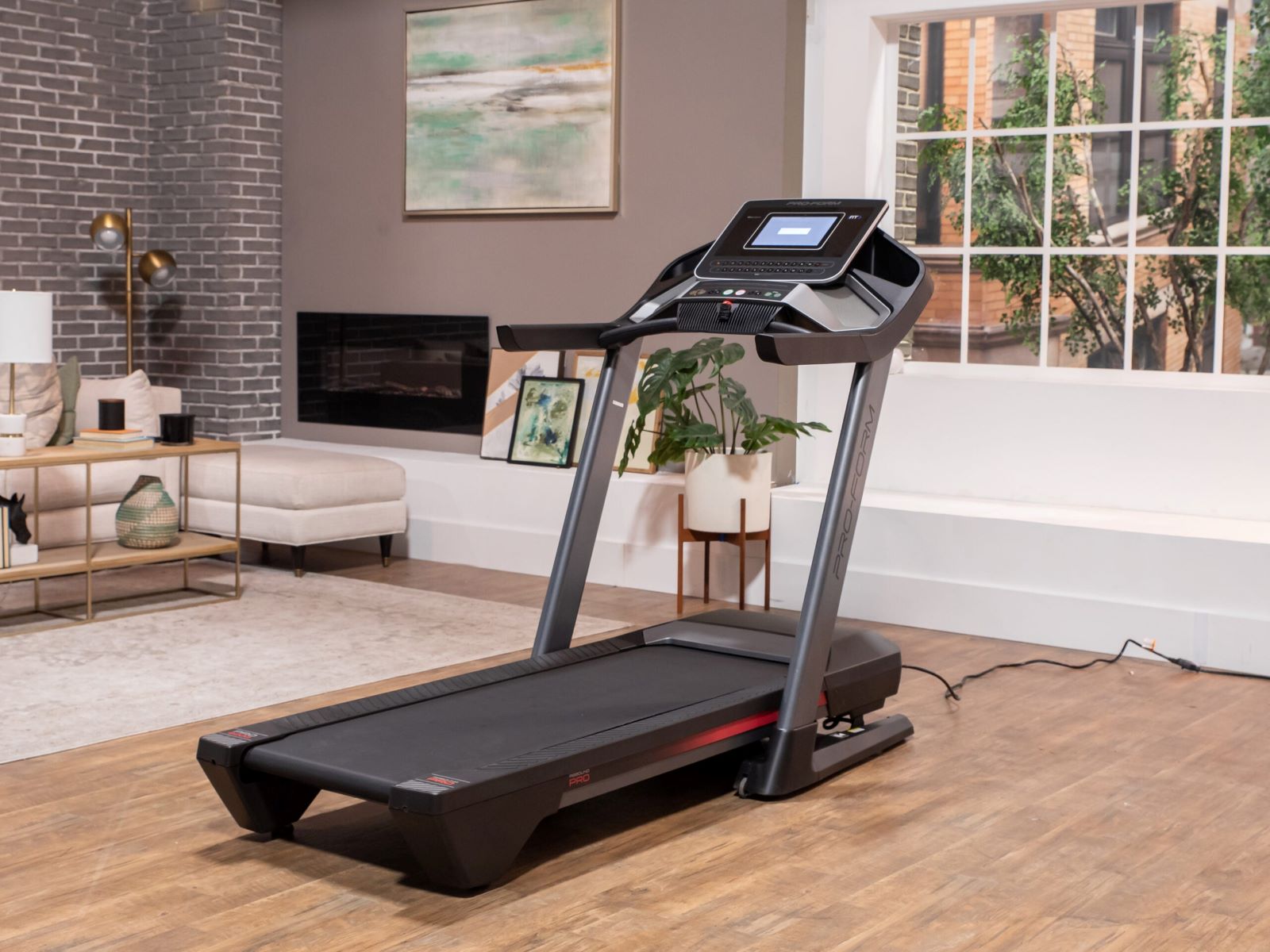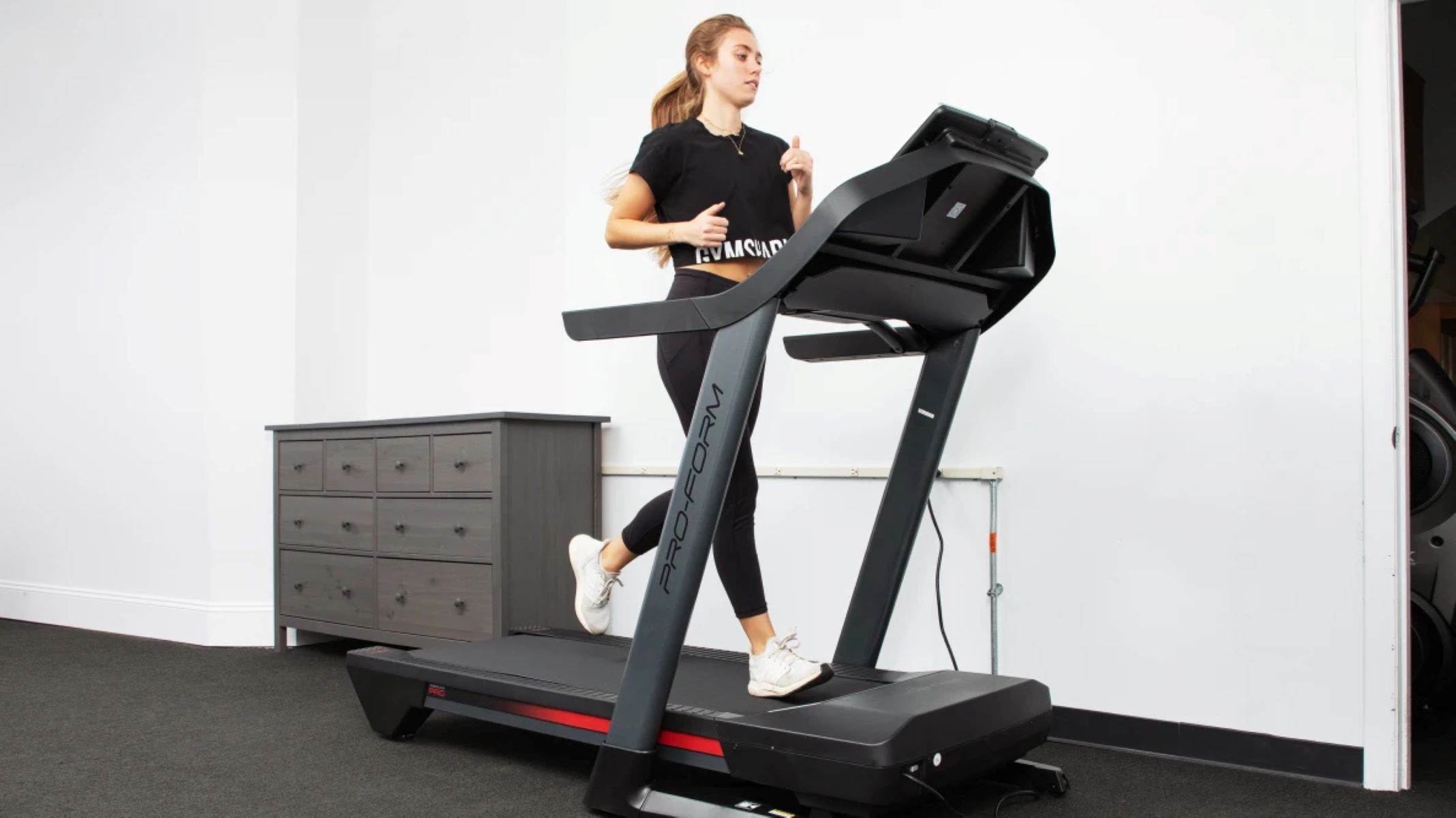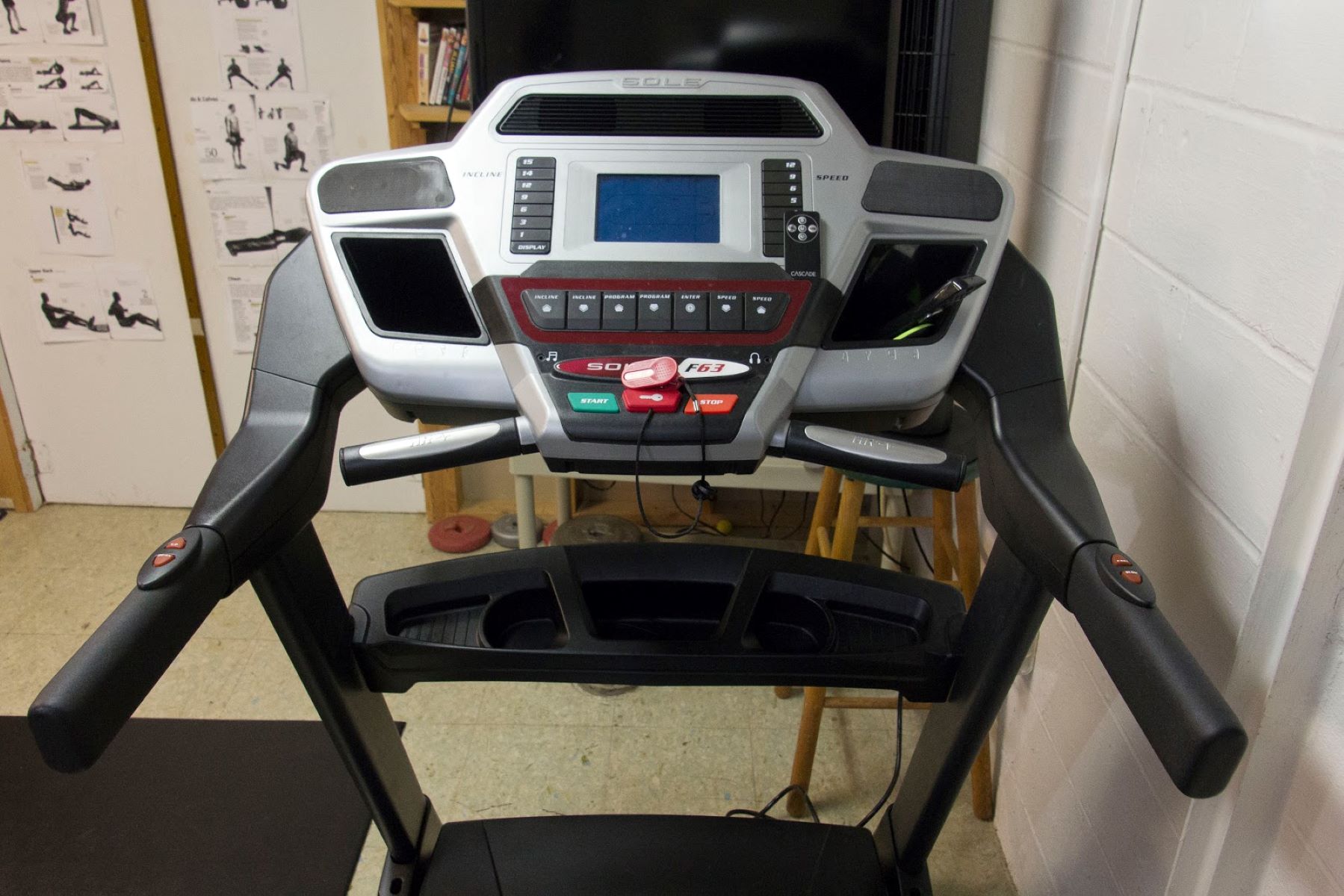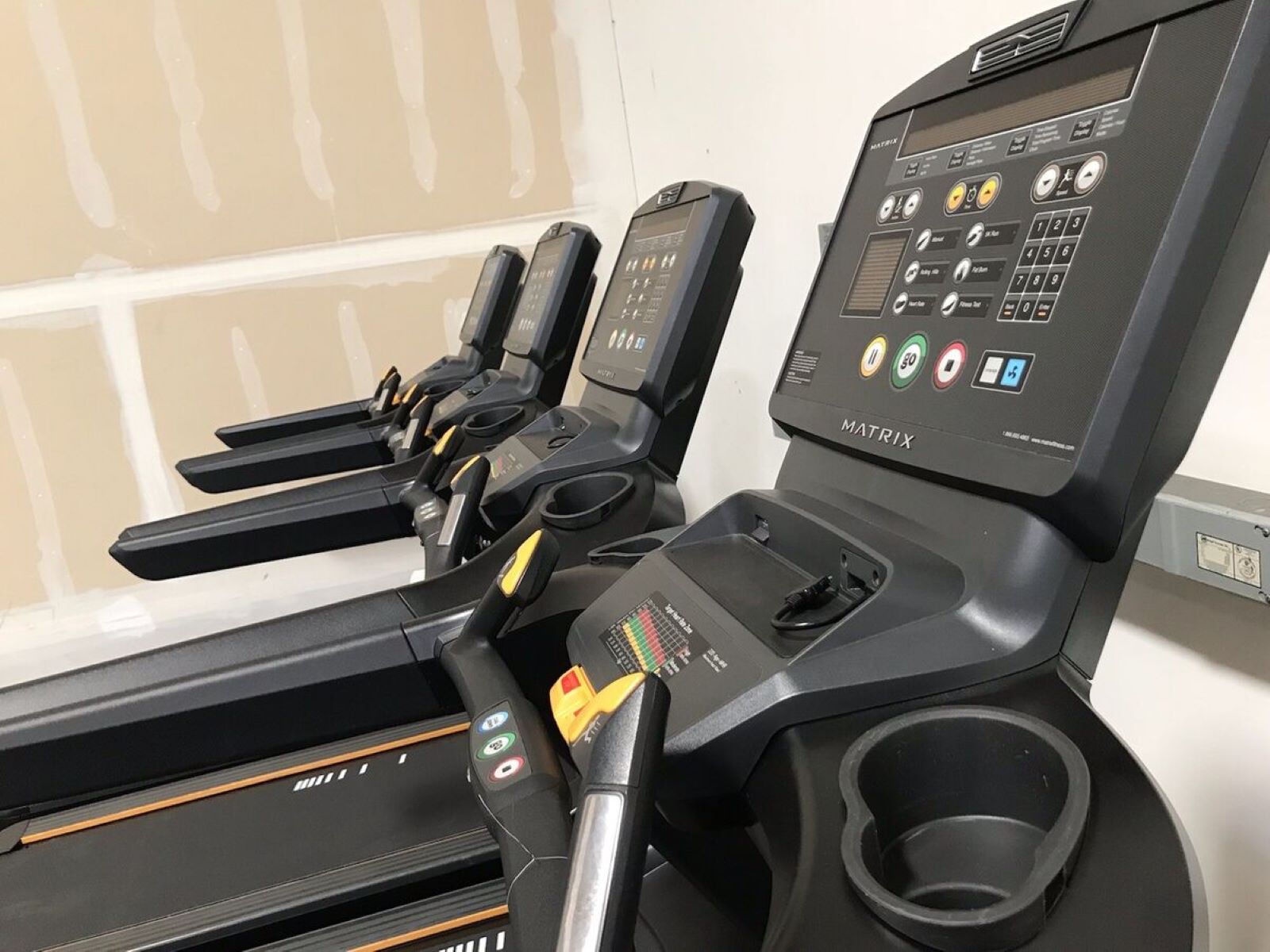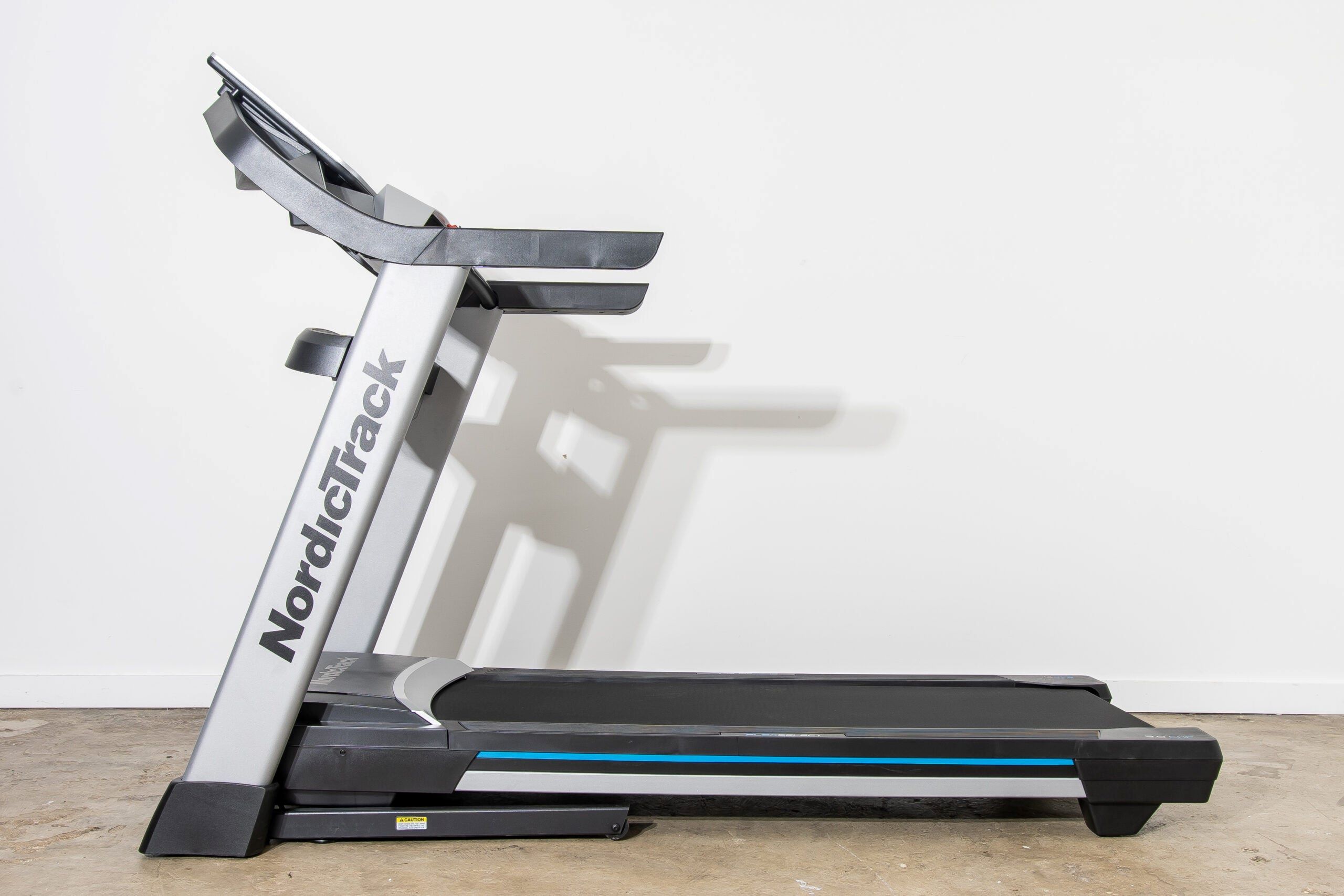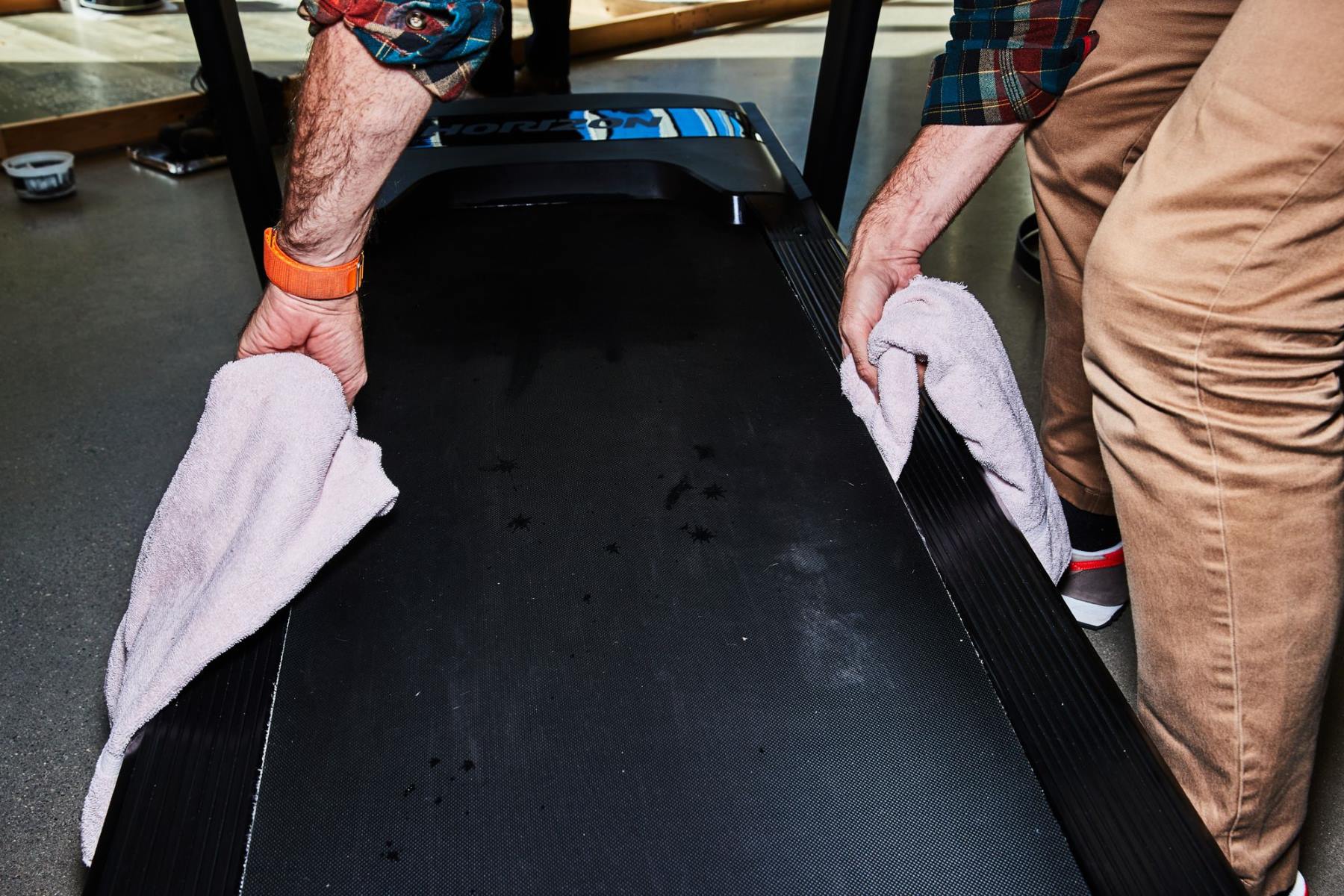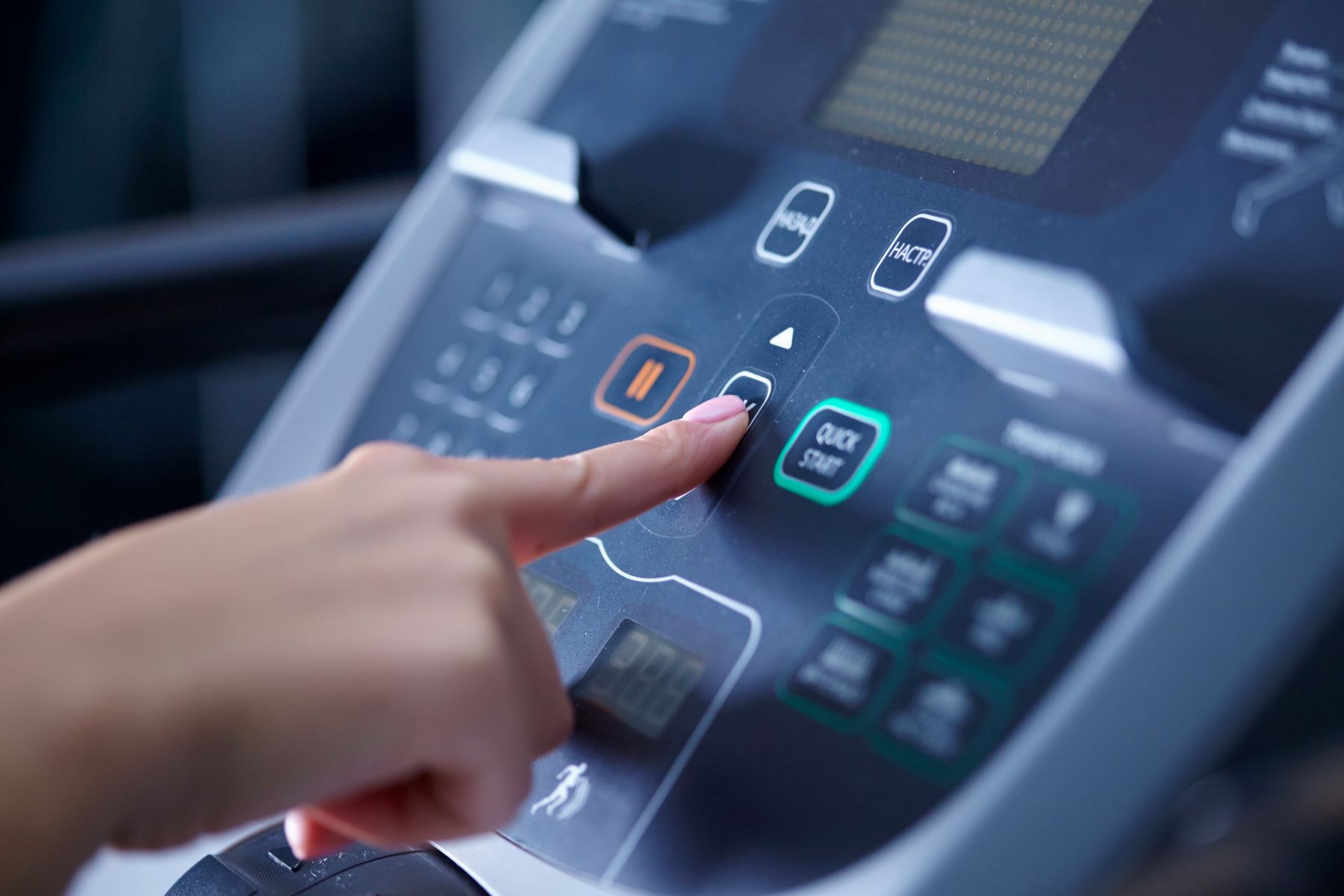

Featured
How To Turn On Treadmill
Modified: January 2, 2024
Learn how to turn on your treadmill with this step-by-step guide. From troubleshooting common issues to optimizing your workout, our featured tips will help you get started.
Introduction
Welcome to our comprehensive guide on how to turn on a treadmill. Whether you’re a seasoned fitness enthusiast or just starting your fitness journey, understanding how to power up and use a treadmill is essential. Treadmills are a popular choice for indoor workouts as they provide a convenient and effective way to get in your daily dose of cardio.
In this article, we will walk you through the step-by-step process of turning on a treadmill and getting started with your workout routine. We’ll also cover important safety precautions, setting up the display console, adjusting the incline and speed, monitoring your progress, and properly cooling down and turning off the treadmill. Additionally, we’ll provide you with some maintenance and troubleshooting tips to ensure your treadmill stays in optimal condition.
Whether you’re using a treadmill at the gym or you have one at home, learning how to turn it on and use it correctly will help you achieve your fitness goals and enjoy a safe and effective workout experience.
So, let’s get started with our guide on how to turn on a treadmill and make the most out of your cardio sessions!
Safety Precautions
Before you start using a treadmill, it’s important to prioritize safety. Here are some essential safety precautions to keep in mind:
- Read the user manual: Familiarize yourself with the specific instructions provided by the manufacturer. Each treadmill may have slightly different features and safety guidelines, so it’s crucial to read the user manual thoroughly.
- Clear the area: Ensure that the space around the treadmill is clear of any obstacles or obstructions. This will prevent accidents during your workout and ensure that you have enough room to comfortably move on the treadmill.
- Wear suitable attire: Always wear proper workout attire, including comfortable athletic shoes and clothing that allows for freedom of movement. Avoid loose clothing that may get caught in the treadmill’s moving parts.
- Warm-up and cool-down: Perform a brief warm-up routine before getting on the treadmill. This can include stretching exercises or a short walk to prepare your muscles for exercise. After your workout, cool down with a few minutes of gentle walking or stretching to gradually lower your heart rate.
- Start with a slow pace: If you’re new to using a treadmill or haven’t exercised in a while, it’s important to begin at a slow pace. Gradually increase the speed and intensity of your workout as your fitness level improves.
- Maintain proper posture: When using the treadmill, maintain good posture by keeping your head up, shoulders relaxed, and core engaged. Avoid leaning forward or holding onto the handrails excessively, as this can alter your natural gait and increase the risk of injury.
- Use the safety features: Most treadmills come equipped with safety features such as an emergency stop button or safety clip. Make sure you are familiar with these features and know how to use them in case of an emergency.
- Stay hydrated: Keep a water bottle nearby and sip water during your workout to stay hydrated. Dehydration can lead to fatigue and dizziness, increasing the risk of accidents.
- Listen to your body: Pay attention to any signs of discomfort or pain during your workout. If you experience chest pain, severe shortness of breath, dizziness, or any other alarming symptoms, stop exercising immediately and seek medical attention.
By following these safety precautions, you can minimize the risk of injuries and enjoy a safe and productive treadmill workout. Remember, safety should always be your top priority when using any exercise equipment.
Powering Up the Treadmill
Now that you’re aware of the necessary safety precautions, let’s dive into how to power up a treadmill:
- Locate the power switch: Most treadmills have a power switch either on the console or at the base of the machine. Find the power switch and make sure it is in the “OFF” position before plugging in the treadmill.
- Plug in the treadmill: Locate the power cord and plug it into a nearby electrical outlet. Ensure the outlet is grounded and can support the power requirements of the treadmill.
- Turn on the power: Once the treadmill is plugged in, flip the power switch to the “ON” position. The console should light up, indicating that the treadmill is receiving power.
- Check for any error messages: After powering up the treadmill, the console may display an error message or a prompt to perform certain actions, such as inserting a safety key or inputting your personal information. Follow the instructions provided on the display to proceed.
- Insert the safety key: Many treadmills require the use of a safety key to start the machine. The safety key is typically attached to a cord and can be clipped onto your clothing. Insert the safety key into the designated slot on the console.
- Wait for initialization: Once the safety key is inserted, the treadmill will go through a brief initialization process. During this time, the console may display messages or perform a calibration check. Wait for the initialization to complete before proceeding.
- Choose your workout settings: Once the treadmill is powered up and initialized, you can now set your preferred workout settings. This may include selecting a specific workout program, adjusting the speed and incline, or inputting your age, weight, and other information for accurate calorie burn calculations.
- Get on the treadmill: Once you have set your desired workout settings, carefully step onto the treadmill. Make sure to position yourself with a balanced stance and maintain a firm grip on the side handles if needed.
With these steps, you can successfully power up a treadmill and prepare yourself for a satisfying workout. Remember to take it slow at first and gradually increase the intensity of your exercise as you become more comfortable with using the treadmill.
Setting Up the Display Console
Once you have powered up the treadmill, the next step is to set up the display console. The display console is where you can access various functions and monitor your workout progress. Here’s how to set it up:
- Adjust the angle: Most treadmills allow you to adjust the angle or tilt of the display console. Find the adjustment lever or knob, usually located at the back or underneath the console, and set it to a comfortable viewing angle.
- Choose a display mode: Depending on the treadmill model, you may have several display options to choose from. Common display modes include time, distance, speed, calories burned, and heart rate. Use the buttons or touch screen on the console to cycle through and select the desired display mode.
- Set your workout goals: Some treadmills offer the option to set specific workout goals, such as a target time, distance, or calorie burn. If you have a specific goal in mind, navigate to the settings menu and input your desired target.
- Connect to Bluetooth or other devices: If your treadmill supports wireless connectivity, you may be able to connect it to your smartphone, tablet, or other compatible devices. This can allow you to sync your workout data, stream music, or access fitness apps. Follow the instructions provided by the manufacturer to establish the connection.
- Adjust the brightness and volume: If the display console has adjustable brightness or volume settings, you can customize them to suit your preference. Brighten or dim the display as needed, and adjust the volume of any audio feedback or workout instructions.
- Test the console functions: Before starting your workout, take a moment to test the console functions. Press the buttons or interact with the touch screen to verify that they respond accurately and smoothly. This will ensure that you have full control over the display console while exercising.
By following these steps, you can easily set up the display console and tailor it to your preferences. Having a properly configured display console will allow you to monitor your workout progress and stay motivated throughout your treadmill sessions.
Adjusting the Incline and Speed
One of the key features of a treadmill is the ability to adjust the incline and speed levels. These adjustments allow you to add variety and intensity to your workouts. Here’s how to adjust the incline and speed on a treadmill:
- Locate the incline controls: Look for the buttons or levers on the console or handrails that control the incline settings. Depending on the treadmill model, the incline controls may be labeled with arrows indicating “up” and “down” or with specific incline levels.
- Start with a flat or minimal incline: If you’re new to using a treadmill or just beginning your workout, it’s best to start with a flat or minimal incline. This will allow you to get accustomed to the motion and gradually increase the intensity over time.
- Gradually increase the incline: As you become more comfortable, you can increase the incline to target different muscle groups and add a challenge to your workouts. Use the incline controls to raise the treadmill surface, simulating an uphill climb.
- Adjust the speed: In addition to the incline, you can also control the speed of the treadmill. Look for the speed controls on the console or handrails. Typically, there are buttons for increasing or decreasing the speed in small increments.
- Start with a comfortable pace: Begin with a slower speed that allows you to maintain proper form and a comfortable stride. As you warm up and get into the rhythm, you can gradually increase the speed to challenge yourself.
- Experiment with interval training: Interval training involves alternating between periods of higher intensity and recovery. You can try incorporating interval training into your treadmill workouts by adjusting the speed and incline at specific intervals.
- Listen to your body: Pay attention to how your body feels as you adjust the incline and speed. If you feel any discomfort or strain, it’s important to decrease the intensity or take a break. Be mindful of your limitations and progress at a pace that suits your fitness level.
- Keep track of your settings: If you have a preferred incline or speed level, make a note of it or save it as a preset on the treadmill. This way, you can easily access your desired settings for future workouts.
By mastering the art of adjusting the incline and speed on a treadmill, you can customize your workouts to match your fitness goals and preferences. Remember to start slow, gradually increase the intensity, and listen to your body to ensure a safe and effective workout experience.
Starting the Workout
Now that you have set up the display console and adjusted the incline and speed levels, it’s time to start your treadmill workout. Here’s how you can begin:
- Position yourself correctly: Stand on the treadmill belt, making sure your feet are parallel and centered. Maintain an upright posture with your shoulders relaxed and your gaze forward.
- Hold onto the handrails if needed: If you’re new to using a treadmill or feel the need for extra stability, you can lightly hold onto the handrails. However, try to minimize reliance on the handrails to maintain proper form and engage your core muscles.
- Press the start button: Locate the start button on the console and press it to start the treadmill. The belt will begin moving at a slow speed, typically around 0.5 to 1 mile per hour.
- Gradually increase the speed: As you get comfortable with the initial speed, you can gradually increase it to match your desired workout intensity. Use the speed controls on the console or handrails to make adjustments in small increments.
- Focus on your form and breathing: Pay attention to your posture as you walk, jog, or run on the treadmill. Maintain a relaxed upper body, engage your core muscles, and breathe deeply and rhythmically. Focus on your breathing to stay relaxed and centered during your workout.
- Set a target time or distance: If you have a specific workout goal in mind, such as a target time or distance, keep track of your progress on the console. Many treadmills allow you to set a countdown timer or input your desired distance, giving you a visual cue of your progress.
- Listen to your body: As you exercise on the treadmill, pay attention to your body’s cues. If you start to feel excessively fatigued, experience pain, or feel dizzy or lightheaded, it’s crucial to listen to your body and adjust your intensity or take a break as needed.
- Stay hydrated: Keep a water bottle nearby and take sips of water throughout your workout to stay hydrated. It’s important to replenish fluids lost through sweat to maintain optimal performance and prevent dehydration.
- Enjoy the workout: Use the time spent on the treadmill to unwind, listen to music, catch up on podcasts, or watch your favorite show. Embrace the opportunity to focus on your health and well-being and make the most of your workout experience.
Remember, each workout on the treadmill is an opportunity to challenge yourself and improve your fitness. Embrace the process and enjoy the journey as you work towards achieving your fitness goals.
Monitoring Your Progress
Monitoring your progress during your treadmill workout can provide valuable insights and keep you motivated. Here are some ways to effectively track and monitor your progress:
- Use the console display: The display console on the treadmill typically shows key metrics such as time, distance, speed, calories burned, and heart rate. Glance at the display periodically to keep track of your workout stats.
- Set personal goals: Set specific goals for your workouts, whether it’s increasing your distance, running for a certain duration, or achieving a target calorie burn. By setting goals, you have something to strive for and can track your progress over time.
- Keep a workout journal: Consider keeping a workout journal to log your treadmill sessions. Note down the date, time, workout duration, distance covered, and any other relevant details. This can help you track your progress and identify patterns or improvements.
- Use a fitness tracking app or device: If you prefer a more comprehensive approach to tracking your progress, consider using a fitness tracking app or device. These tools can provide a detailed analysis of your workouts, including distance, pace, heart rate, and calories burned.
- Utilize heart rate monitoring: Many treadmills come equipped with heart rate sensors or are compatible with heart rate monitors. Monitoring your heart rate during your workout can help you gauge your effort level and ensure you’re working within your target heart rate zone.
- Experiment with interval training: Interval training, alternating between periods of higher intensity and recovery, is an effective way to boost your cardiovascular fitness. Monitor your progress during interval sessions, noting how long you can sustain the high-intensity intervals and how quickly your heart rate recovers during the recovery periods.
- Track your perceived exertion: Pay attention to how hard you feel you’re working during your treadmill workouts. Rate your perceived exertion on a scale of 1 to 10, with 1 being very easy and 10 being maximum effort. This can help you adjust your intensity levels to optimize your workouts.
- Celebrate milestones and progress: As you make progress and achieve milestones in your treadmill workouts, take a moment to celebrate your accomplishments. Rewarding yourself for your dedication and hard work can help maintain motivation and inspire you to keep pushing forward.
- Track changes in performance over time: By consistently monitoring your progress, you can identify any improvements or changes in your treadmill performance. This can include running faster, covering more distance, or sustaining longer workout durations. Celebrate these improvements as they indicate your progress and fitness growth.
Monitoring your progress keeps you accountable and provides a tangible way to see the results of your efforts. It can also help you identify areas for improvement and tailor your future workouts to optimize your fitness goals.
Cooling Down and Turning Off the Treadmill
After completing your treadmill workout, it’s important to properly cool down and turn off the treadmill. This helps your body gradually transition from exercise to a resting state and ensures the longevity of your treadmill. Here’s how to cool down and turn off the treadmill:
- Gradually reduce the intensity: In the last few minutes of your workout, gradually reduce the speed and incline of the treadmill. This allows your heart rate and breathing to gradually decrease, preventing sudden changes that may lead to dizziness or discomfort.
- Slow your pace: As you near the end of your workout, gradually slow your walking, jogging, or running pace. Transition from a brisk walk to a leisurely stroll to help your muscles relax and recover.
- Keep walking: Continue walking on the treadmill at a slow pace for a few minutes to cool down further. This allows your body temperature to gradually decrease and helps prevent blood from pooling in your lower extremities.
- Perform stretching exercises: After cooling down, take a few minutes to perform some stretching exercises. Focus on stretching the major muscle groups you worked during your workout, such as your calves, quadriceps, hamstrings, and hip flexors.
- Hydrate: During and after your cool-down, make sure to hydrate by drinking water. Replenishing fluids lost through sweat is important for your body’s recovery process.
- Turn off the treadmill: Once you have cooled down and completed your post-workout routine, it’s time to turn off the treadmill. Locate the power switch on the console or unplug the power cord from the outlet.
- Wipe down the treadmill: After turning off the treadmill, take a moment to wipe down the belt and console with a clean towel or disinfectant wipe. This helps remove any sweat or debris and keeps your equipment clean and hygienic.
- Remove the safety key: If your treadmill uses a safety key, remember to remove it from the console. This prevents accidentally starting the treadmill when it’s not in use.
- Check for any maintenance needs: Before you finish your workout session, take a quick look at the treadmill for any signs of wear, loose parts, or maintenance needs. If you notice anything unusual, consult the user manual or contact the manufacturer for assistance.
Properly cooling down and turning off the treadmill is essential for both your safety and the longevity of the equipment. By following these steps, you can ensure a safe and effective workout experience while maintaining the durability of your treadmill.
Maintenance and Troubleshooting Tips
Regular maintenance of your treadmill is crucial to keep it functioning optimally and prolong its lifespan. Additionally, being aware of troubleshooting techniques helps address common issues that may arise. Here are some maintenance and troubleshooting tips to keep your treadmill in top shape:
- Clean the treadmill regularly: Wipe down the treadmill’s surfaces, including the console, handrails, and belt, with a clean cloth or disinfectant wipe to remove sweat, dust, and debris. This prevents dirt buildup and ensures smooth operation.
- Lubricate the belt: Follow the manufacturer’s guidelines for lubricating the treadmill belt. Regularly applying lubricant helps reduce friction and ensures a smooth and quiet workout experience.
- Inspect the belt tension: Proper belt tension is important for a safe and efficient workout. Check the tension of the treadmill belt by firmly pressing your foot down in the center of the belt. It should only move around 2 to 3 inches. Adjust the tension if needed, following the instructions provided by the manufacturer.
- Check the alignment: Ensure that the treadmill belt is properly aligned. If it is off-center or rubbing against the sides, adjust the belt alignment following the user manual’s instructions to prevent uneven wear and potential damage.
- Tighten loose components: Periodically, check for any loose screws or bolts on the treadmill and tighten them as necessary. Loose components can affect the stability and performance of the treadmill.
- Keep the area around the treadmill clear: Avoid placing any objects near the treadmill that may obstruct the airflow or get tangled in the belt. Maintain a clear space around the treadmill to prevent accidents and maintain proper ventilation.
- Address any unusual noises: If you notice any unusual or persistent noises coming from the treadmill during your workouts, investigate the source. Tighten loose screws, lubricate the belt, or contact the manufacturer for further assistance.
- Monitor display accuracy: Occasionally, check the accuracy of the treadmill’s display console by comparing its readings with an external tracking device or app. If there are significant discrepancies, consult the user manual or reach out to the manufacturer for guidance.
- Refer to the user manual: Familiarize yourself with the specific maintenance recommendations outlined in the user manual provided by the manufacturer. It provides valuable information and guidelines tailored to your specific treadmill model.
- Contact customer support when needed: If you encounter any persistent issues or experience technical difficulties with your treadmill, don’t hesitate to reach out to the customer support team of the manufacturer. They can provide guidance, troubleshooting assistance, or arrange for professional maintenance if necessary.
By following these maintenance and troubleshooting tips, you can ensure that your treadmill operates smoothly and reliably. Regular maintenance not only enhances the longevity of your equipment but also contributes to a safe and enjoyable workout experience.
Conclusion
Congratulations! You have now learned how to turn on a treadmill, adhere to safety precautions, set up the display console, adjust the incline and speed, start your workout, monitor your progress, cool down and turn off the treadmill, and perform maintenance and troubleshooting tasks. Armed with this knowledge, you can confidently incorporate treadmill workouts into your fitness routine, whether at home or in the gym.
Remember, safety should always be a priority when using a treadmill. Familiarize yourself with the user manual and follow the provided instructions to ensure a safe and effective workout experience. Pay attention to proper form, stay hydrated, and listen to your body’s cues to avoid injuries.
Monitoring your progress during your treadmill workouts helps you track your achievements and adjust your goals accordingly. Whether you’re aiming to increase your speed, endurance, or overall fitness level, keeping tabs on your progress can keep you motivated and focused on your journey to success.
Additionally, regular maintenance and troubleshooting will help maintain the longevity and performance of your treadmill. Clean and lubricate the machine regularly, address any issues promptly, and consult the user manual or customer support when needed.
Now that you have a comprehensive understanding of how to turn on a treadmill and optimize your workout experience, it’s time to lace up your shoes, step on the treadmill, and start crushing your fitness goals with confidence and enjoyment!
